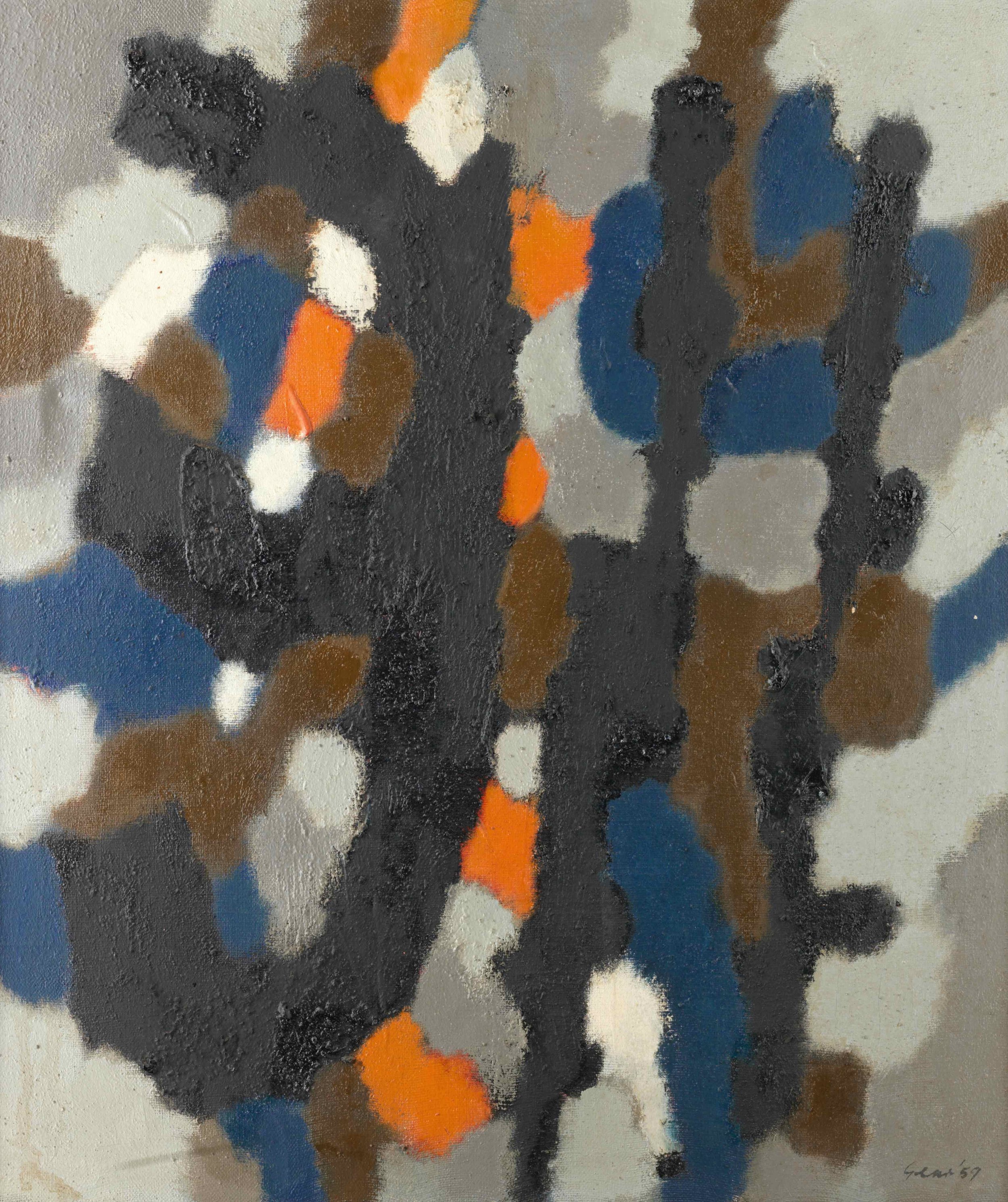William Gear RA (Scottish, 1915-1997)
Biography
A Scottish painter, pioneer of silk printing in Britain and the first abstract artist included in the Royal Academy’s Summer Exhibition, William Gear’s career spanned many continents and established important connections between post-war artists in the UK, France, Germany, the Netherlands and the United States. He trained at the Edinburgh College of Art and completed his postgraduate studies and the University of Edinburgh. He was awarded a travelling scholarship and in 1937-38 Gear visited France, Italy, Yugoslavia, Albania, Greece and Turkey. During his stay in Paris, Gear studied under Fernand Léger. An interest in Surrealism in the late 1930s led Gear to exhibit with the New Era Group in Edinburgh in 1939. Some of Gear’s works were included in the 2017-18 A New Era – Scottish Modern Art 1900-1950 exhibition at the National Galleries Scotland.
During the war William Gear was stationed in the Middle and the Far East; in the immediate post-war period was a Monuments Man in the British Zone of occupied Germany. In the years 1947-50, Gear lived in Paris and met with the post-war generation of Parisian artists. 1948 was the year of William Gear’s first solo shows in Paris and London and in 1949 he exhibited with Jackson Pollock at Betty Parsons Gallery in New York. During this time Gear also established connections with the British artists in St Ives, Cornwall and exhibited with the CoBrA group in Amsterdam. In 1951 Gear was commissioned to produce a work for the 1951 Festival of Britain, his abstract Autumn Landscape was awarded the Purchase Prize but caused public outrage. In 1953 Gear was elected a member of the London Group and a Senior Royal Academician in 1995.
William Gear is one of the most recognisable British Modern artists and while abstraction always prevailed in his works, his conception of nature is enlightening in understanding his process:
‘There was always a link with nature, I never denied nature really. Even in those extreme abstract themes, we have been looking at, there is an equivalence to, observable form.‘
‘I don’t say nature in the naturalistic sense but of observable forms. They may be telegraph poles or stakes or trees or structures or, as I am looking out the window now, I mean, I can see, I can see my painting in two or three different ways.‘
Related artists
Terry Frost / Adrian Heath / Ben Nicholson / Alexander MacKenzie / Tom Cross / Trevor Bell / George Dannatt / John Hoyland / Sandra Blow / Richard Smith
Available works
Please see below the selection of available original artworks by William Gear.


